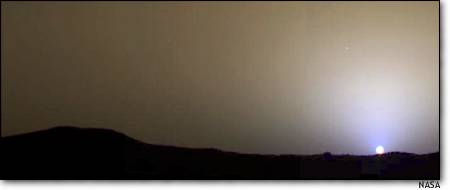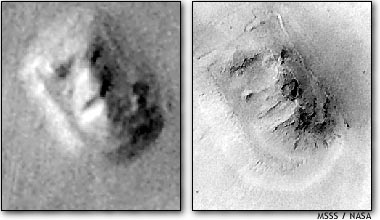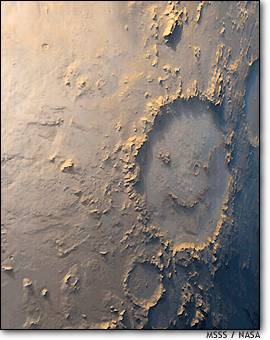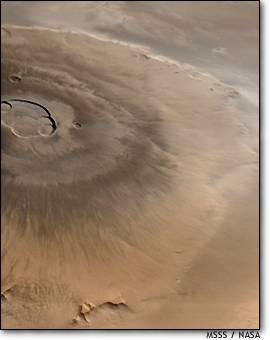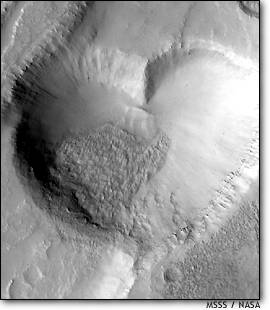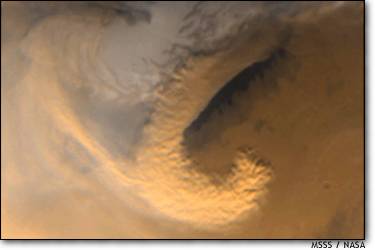| The face of Mars |
 |
||
| The Hubble Space Telescope focuses on the full disk of Mars, with a head-on view of a dark feature known as Syrtis Major. Hubble astronomers could make out features as small as 12 miles wide. |
| Grand canyon |
 |
||
| This is a composite of Viking orbiter images that shows the Valles Marineris canyon system. The entire system measures more than 1,875 miles long and has an average depth of 5 miles. |
| Red rover |
| Twin Peaks at their peak |
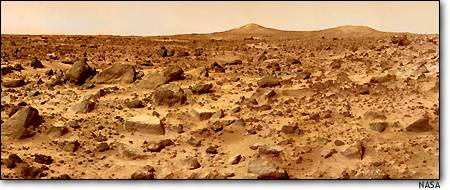 |
||
| The Pathfinder probe focuses on Twin Peaks, two hills of modest height on the Martian horizon. Each peak rises about 100 feet above the surrounding rock-littered terrain |
| Blue horizon |
| Two-faced Mars |


